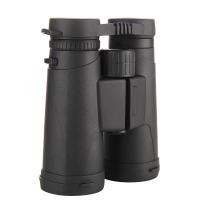How To Recover Lost Files On Sd Card?
Losing important files on an SD card can be a distressing experience, especially if those files contain valuable data such as photos, videos, or work documents. Fortunately, there are several methods to recover lost files from an SD card. This article will guide you through the most effective techniques and tools to help you retrieve your lost data.
Understanding the Causes of Data Loss

Before diving into the recovery methods, it’s essential to understand the common causes of data loss on SD cards. These include:
1. Accidental Deletion: Files can be mistakenly deleted by the user.
2. Formatting: The SD card may be formatted accidentally, erasing all stored data.
3. Corruption: The file system of the SD card can become corrupted due to improper ejection, virus attacks, or other reasons.
4. Physical Damage: Physical damage to the SD card can make it unreadable.
5. Software Issues: Errors in the operating system or the device using the SD card can lead to data loss.
Immediate Steps to Take

When you realize that files are missing from your SD card, it’s crucial to act quickly and carefully to maximize the chances of recovery:
1. Stop Using the SD Card: Continued use can overwrite the lost files, making recovery more difficult or impossible.
2. Do Not Format the Card: Formatting will erase all data and complicate the recovery process.
3. Safely Eject the Card: Remove the SD card from the device to prevent further damage or data loss.
Methods to Recover Lost Files

1. Using Data Recovery Software

Data recovery software is one of the most effective ways to retrieve lost files from an SD card. Here are some popular options:
- Recuva: A user-friendly tool that can recover files from damaged or formatted SD cards.
- EaseUS Data Recovery Wizard: Known for its high recovery rate and ease of use.
- Disk Drill: Offers a comprehensive set of features for recovering lost files.
Steps to Use Data Recovery Software:
1. Download and Install: Choose a reliable data recovery software and install it on your computer.
2. Connect the SD Card: Use a card reader to connect the SD card to your computer.
3. Scan the SD Card: Open the software and select the SD card as the target for scanning.
4. Preview and Recover: After the scan, preview the recoverable files and select the ones you want to restore. Save them to a different storage location to avoid overwriting.
2. Using Command Prompt (Windows)
For users comfortable with command-line tools, the Command Prompt can be used to recover lost files:
1. Connect the SD Card: Insert the SD card into your computer.
2. Open Command Prompt: Press `Win + R`, type `cmd`, and press Enter.
3. Run the Command: Type `chkdsk X: /f` (replace `X` with the drive letter of your SD card) and press Enter. This command checks for file system errors and attempts to fix them.
4. Recover Files: If the command finds lost files, it will save them in a newly created directory on the SD card.
3. Using Mac Terminal (macOS)
Mac users can use the Terminal to attempt file recovery:
1. Connect the SD Card: Insert the SD card into your Mac.
2. Open Terminal: Go to Applications > Utilities > Terminal.
3. Run the Command: Type `diskutil list` to find the identifier of your SD card. Then, type `diskutil repairVolume /dev/diskX` (replace `diskX` with the identifier) and press Enter.
4. Recover Files: If the command repairs the volume, you may be able to access and recover your files.
4. Professional Data Recovery Services
If the above methods fail, or if the SD card is physically damaged, professional data recovery services may be necessary. These services have specialized equipment and expertise to recover data from damaged or corrupted SD cards. However, they can be expensive, so consider this option if the lost data is extremely valuable.
Preventing Future Data Loss
While recovering lost files is possible, it’s always better to prevent data loss in the first place. Here are some tips to protect your data:
1. Regular Backups: Regularly back up your SD card data to another storage device or cloud service.
2. Safe Ejection: Always safely eject your SD card from devices to prevent corruption.
3. Use Reliable Devices: Use high-quality SD cards and card readers to minimize the risk of hardware failure.
4. Antivirus Protection: Keep your devices protected with reliable antivirus software to prevent malware attacks.
5. Avoid Full Capacity: Do not fill the SD card to its maximum capacity, as this can lead to file system errors.
Recovering lost files from an SD card is a process that requires careful steps and the right tools. By understanding the causes of data loss and following the methods outlined in this article, you can significantly increase your chances of successful recovery. Remember to act quickly, avoid further use of the SD card, and consider professional help if necessary. Additionally, implementing preventive measures can help you avoid future data loss and keep your valuable files safe.
















![4K digital camera for photography and video [autofocus and stabilisation] 48 MP video blog camera with SD card, 3 4K digital camera for photography and video [autofocus and stabilisation] 48 MP video blog camera with SD card, 3](https://img.kentfaith.com/cache/catalog/products/us/GW41.0065/GW41.0065-1-200x200.jpg)

























